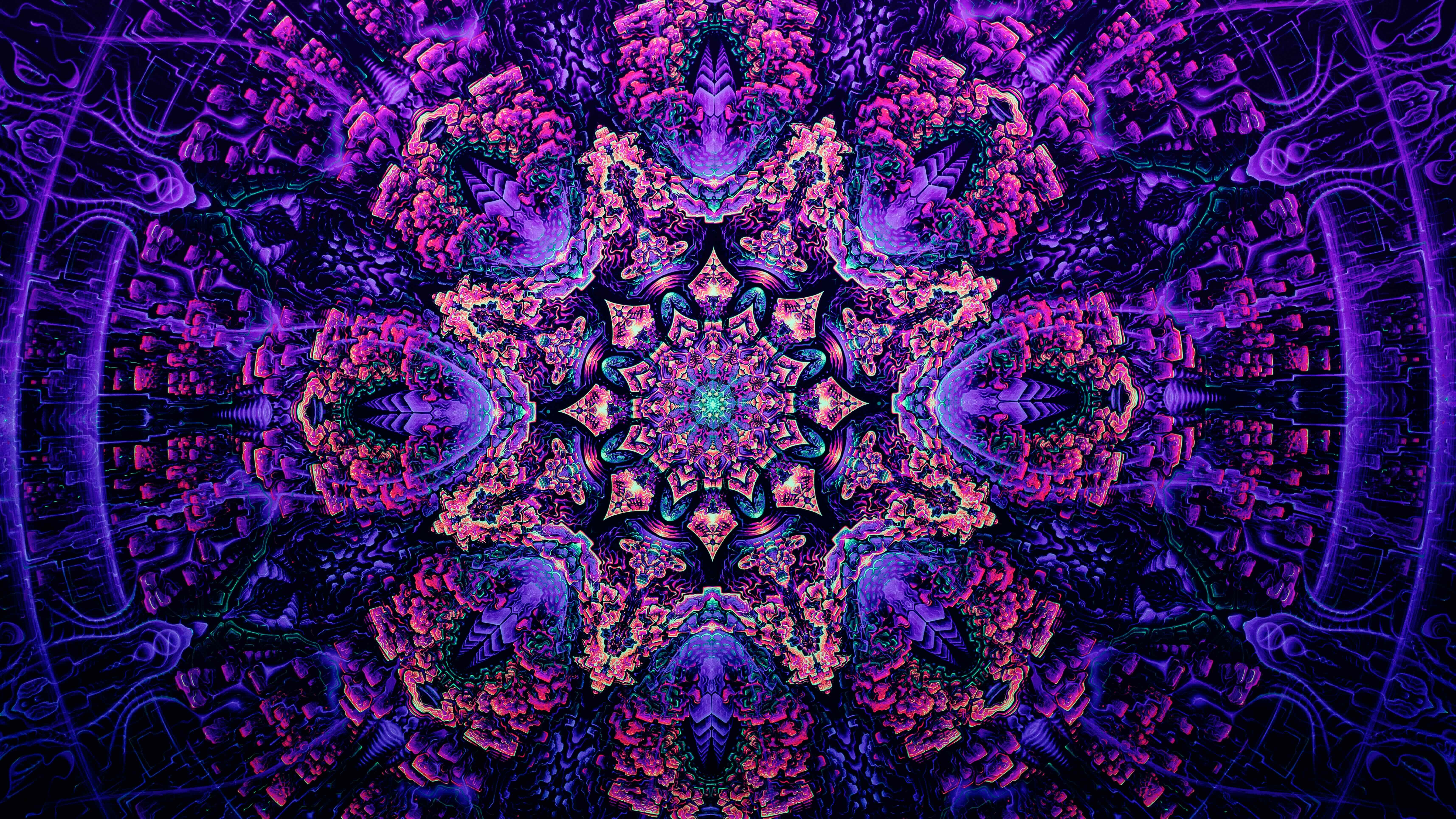What Is a “Psychedelic,” Really?
Many patients describe hearing the word psychedelic and immediately picturing kaleidoscopes and all-day out-of-body experiences. That’s one story — but not the whole story. In clinical practice, it’s helpful to bring the word back to its roots and to your lived experience: what happens in your mind, your senses, and your sense of possibility during and after care.
At Lumin Health, we use the term carefully. Ketamine therapy is not a promise of euphoria or a shortcut to insight. It is a medical intervention that can produce psychedelic effects in some people — and naming those effects helps us keep you safe, supported, and in control.
A brief history of the word
The word psychedelic was coined in the 1950s from Greek roots meaning “mind-manifesting.” The original idea wasn’t “hallucinations” but mind made more visible: experiences that expand or reveal otherwise-shrouded elements of thought, emotion, and perception. Over time, popular culture has influenced the term to invoke images of bright visuals and all-day journeys. Clinically, we keep a wider, more useful definition:
- Substances that shift perception and cognition (how you sense and how you think)
- Experiences that may support growth or healing for some patients
- Agents that are often — but not always — linked to the 5-HT2A serotonin receptor
That last point matters. Some classic psychedelics (e.g., psilocybin, LSD, DMT) primarily act on this 5-HT2A receptor. Other adjacent compounds — like ketamine — do not act on the 5-HT2A receptor, yet can still produce psychedelic-like experiences.
Experience (phenomenology) vs. mechanism (the biology) of psychedelics
Two lenses help here:
- Phenomenology (what it feels like): Patients often report shifts in color, pattern, time sense, and the emotional “tone” of sensory inputs (i.e. music); new associations between ideas; and changes in self-perspective. These effects vary by person, by context and by dose.
- Mechanism (how it works): Classic psychedelics often engage 5-HT2A pathways. Ketamine primarily affects the glutamate system — notably, the NMDA receptors — which can rapidly alter brain network dynamics and open a temporary neuroplasticity window — a period when new learning and healthier patterns may land more readily.
Both lenses matter. The felt experience can be materially meaningful. This biology helps us deliver ketamine treatment and esketamine (Spravato) treatment safely and consistently. These psychedelic-like effects can, in some patients, create conditions where change feels possible.
Where does ketamine fit?
Is ketamine a psychedelic? Medically, ketamine is a dissociative anesthetic. Experientially, many patients describe psychedelic effects — altered sensory processing, a loosening of rigid thought patterns, and a shift in perspective — which can contribute to a lighter mood and lessening of depressive symptoms. A useful analogy we share at Lumin Health: ketamine is in the same neighborhood as classical psychedelics, but lives in a different house. Ketamine therapy “lives” near classic psychedelics in terms of subjective experience, while residing in a different biological “house” by the differences in its mechanisms of action and qualities of the subjective experiences.
Three practical distinctions patients often notice:
- More inward-facing. Therapeutic doses of ketamine often invite a quieter, internal focus. Eye masks and curated music can help the mind settle.
- Shorter duration. Most patients move through the intense phase in about an hour, with another 30–60 minutes of re-orientation. That makes ketamine treatment logistically easier to schedule and manage than all-day protocols which is characteristic of other psychedelics like psilocybin and LSD.
- Different afterglow. In some patients, the hours-to-days after dosing can feel more flexible and receptive. Many choose to meet with their therapist during this neuroplasticity window to explore new skills or meanings.
If you’re comparing ketamine therapy to a past experience with psilocybin, expect overlap and difference. What matters most is what feels possible to you, in a setting that prioritizes your comfort and safety.
Why classification matters in clinical care
Whether receiving ketamine for depression or FDA-approved esketamine (Spravato) in a REMS-certified Spravato clinic, language shapes care:
- Safety planning. Treating ketamine’s subjective effects as psychedelic-like prompts deliberate attention to set and setting — lighting, sound, body comfort, and a calm, clinically monitored environment. This is why Lumin Health’s locations are all centered around comfort and warmth, including the amenities, design, and expert clinicians.
- Expectations and agency. Patients are invited — not pushed — to approach the psychedelic-like experience with curiosity. You maintain participatory control; our team stays present, prepared, and unobtrusively medical.
- Care pathways. Understanding mechanisms helps Lumin Health tailor dose, route, and schedule. Phenomenology guides preparation, coaching, and post-dose psychotherapy or behavioral support.
In short: the label isn’t about hype. It’s about designing ketamine therapy that is safer, more compassionate, and more effective for real people.
How Lumin Health talks about psychedelics and ketamine
Lumin Health describes ketamine as a dissociative anesthetic with psychedelic effects. That phrasing does three things:
- Stays medically precise. We align with how the medicine is categorized in anesthesia and psychiatry.
- Acknowledges lived experience. Many patients encounter meaningful shifts in perception and perspective during ketamine treatment. Ignoring that would be inaccurate and unhelpful.
- Centers your agency. We emphasize preparation, professional monitoring, and collaborative debriefs — so any insights can be explored safely with your existing therapist or with our behavioral support team.
We also distinguish between off-label ketamine and esketamine (Spravato), which is FDA-approved for specific types of depression and delivered within a REMS-certified Spravato clinic model (REMs keeps track of the certifies clinics that are appropriate for providing Spravato and monitors for side effects). Both can be part of evidence-informed ketamine treatment; which path fits you depends on diagnosis, medical history, response, logistics, and cost.
FAQs
Do psychedelics require visuals to “mean anything”?
No. Visuals can occur, but they aren’t required. Psychedelic effects also include changes in time sense, emotional tone, body perception, and the connections your mind makes between ideas. Many patients receiving ketamine for depression report quieter, more inward shifts rather than vivid visuals — still clinically relevant and can be profoundly helpful.
Is safety mostly about psychedelic dose — or mostly about context?
Both. Dose and route matter, and so does context: a medically monitored setting, clear intentions, comfortable positioning, curated sound, and compassionate support. Clinicians often find that thoughtful set and setting reduce anxiety, make difficult moments more manageable, and help the experience translate into everyday life.
Psychedelics and ketamine: Bringing the word back to your decision
If you’re exploring ketamine therapy or esketamine (Spravato) treatment, the goal at Lumin Health isn’t to chase a “trip.” It’s to open a window where relief may be possible, gently and safely. Labels help us build the right container; your values and goals help us fill it with care. When you’re ready, we can discuss routes and schedules, coordinate with your existing care team, and decide — together — if ketamine treatment aligns with what you need now.







